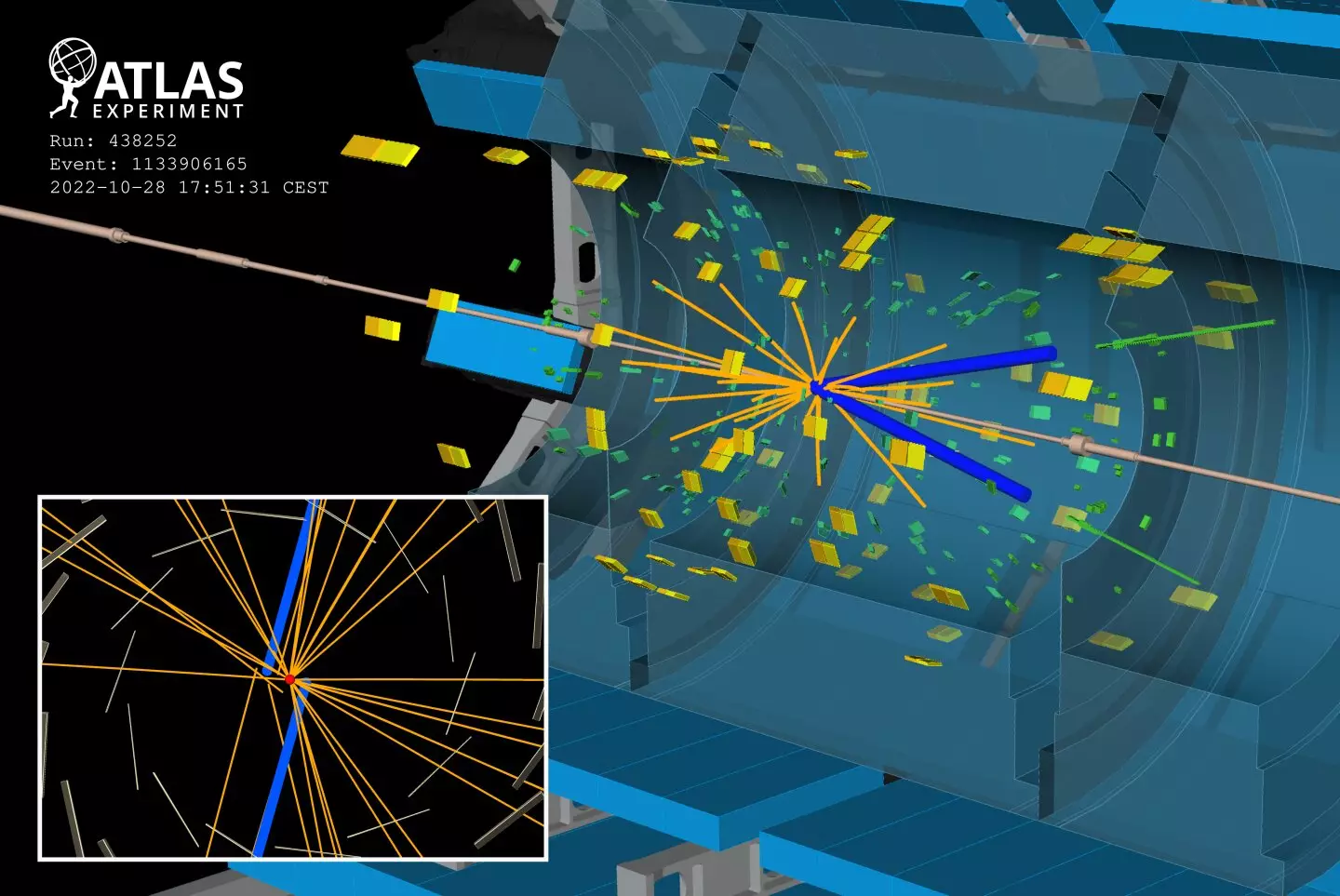The Standard Model of particle physics forms the backbone of our understanding of the particles and forces that constitute the universe. It eloquently describes the quintessential building blocks of matter and how they interact, yet it is widely acknowledged that this framework is fundamentally incomplete. Despite its success, the Standard Model does not account for various phenomena, such as dark matter, gravity at quantum scales, and certain particle behaviors. This limitation has propelled physicists into an ongoing quest to unveil new physics phenomena that can bridge the gaps in our current theoretical landscape.
The need for expansion in the realm of particle physics has gained momentum as experimental efforts intensify globally. Researchers are tirelessly searching for indications of theories that extend beyond the Standard Model, striving to identify particles and interactions that could transform our understanding of physical laws. One prominent venue for these inquiries is the International Conference on High Energy Physics (ICHEP), where researchers gather to share breakthroughs and advancements in exploring the mysteries that lie beyond established physics.
New Frontiers in Research
At the recent ICHEP conference held in Prague, the ATLAS collaboration revealed groundbreaking findings from their explorations of new physics at unprecedented collision energies. Their research included the investigation of magnetic monopoles—hypothetical particles that would provide a compelling symmetry between electricity and magnetism. The existence of magnetic monopoles would lend credence to grand unified theories that attempt to merge the strong, weak, and electromagnetic forces into a single theoretical framework, potentially revolutionizing our comprehension of particle interactions.
The Large Hadron Collider (LHC) stands at the forefront of these revolutionary investigations. Researchers within the ATLAS collaboration are particularly focused on detecting monopoles generated during heavy-ion collisions. Due to their unique electric charge, if these elusive monopoles exist, they would ionize surrounding matter, creating substantial energy deposits that are discernible within particle detectors. This distinctive feature makes the task of detecting monopoles particularly tantalizing, as the signals they produce are unlike any from conventional particles.
Ultraperipheral Collisions: The Quest for Monopoles
Recent findings from ATLAS have delved into ultraperipheral collisions between lead ions at the LHC. These unique scenarios allow ions to pass closely enough to interact through electromagnetic forces without undergoing direct collisions. The resulting environment generates astonishing magnetic fields—potentially the strongest in the universe, reaching up to 10^16 Tesla. If magnetic monopoles were produced in such interactions, they would present as solitary particle systems guided by the unique ionization signatures they generate in an otherwise empty detector.
Despite extensive searches utilizing the groundbreaking collision data from the LHC’s integration, ATLAS researchers encountered a disappointing yet illuminating outcome—no evidence of magnetic monopoles was detected. The results of these investigations set stringent upper limits on the production of monopoles in ultraperipheral heavy-ion collisions, particularly for monopole masses below 120 GeV. Although this might seem discouraging, such negative results are crucial. They pave the way for more refined methodologies and experimental designs in the ongoing search for exotic particles.
Long-Lived Particles: A New Class of Mysteries
In addition to monopoles, the ATLAS collaboration has turned its focus toward long-lived particles—another category of theoretical constructs that lie beyond the Standard Model. The pursuit of these particles stems from predictions in theories such as supersymmetry, which suggests that stable partners to known particles can exist that evade detection in traditional searches. These long-lived particles may produce decay products that manifest further from the original collision points, presenting a unique challenge for detection.
The ATLAS team has made remarkable strides in its exploration of long-lived particles, capitalizing on enhanced data collection techniques during the third run of the LHC. One intriguing search involved identifying displaced tracks resulting from decays into particles like electrons and muons, which signify potential new physics. This innovative approach reveals the commitment of researchers to refine their methodologies continually.
In light of these results, ATLAS has established the most stringent upper limits on potential long-lived supersymmetric partners, marking a significant leap forward in the pursuit of knowledge. As the LHC continues to provide rich datasets, including data from the forthcoming High-Luminosity LHC, the door remains wide open for the discovery of long-lived particles and other exotic candidates that could reshape our understanding of fundamental physics.
Charting a Course Through the Unknown
With every passing experiment and conference, the quest to transcend the Standard Model of particle physics strengthens. Discoveries of new particles and forces promise to shed light on the enigmatic aspects of our universe. Although current findings may not yet yield the groundbreaking breakthroughs physicists yearn for, they represent critical steps in the relentless and fascinating quest to decipher the fundamental truths that govern reality. The interplay between established knowledge and the tantalizing potential of new discoveries remains at the forefront of research. The journey is as vital as the destination, and each insightful investigation draws us closer to unveiling the universe’s remarkable tapestry.


Leave a Reply